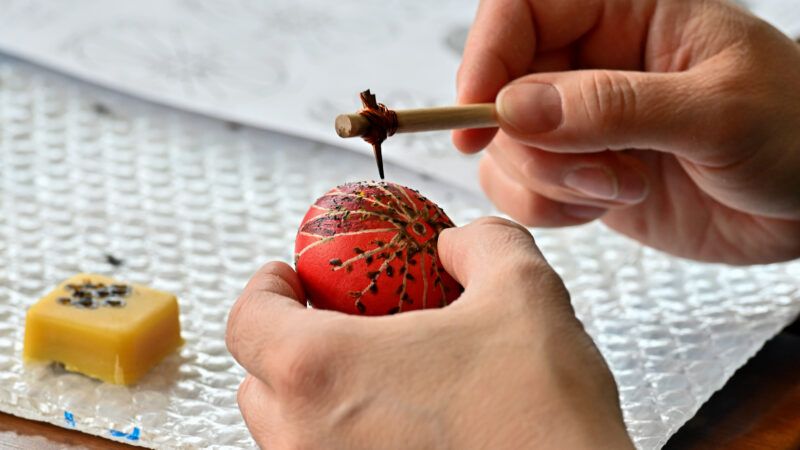How Easter Eggs Spread Around the World
The tradition of decorating eggs in springtime is a lesson in symbols shared across cultures.

Where do Easter eggs come from? The answer for children, of course, is that the Easter Bunny lays them. But the history of decorating eggs on Easter is an interesting question for adults, too.
Of course, it's not difficult to understand how Easter got associated with eggs. Easter is a Christian holiday celebrating Jesus' resurrection, and eggs are where new life is born from. On a less symbolic and more practical level, because eating animal products was historically banned during the Lenten fast preceding Easter, Christians ended up with a lot more eggs than they knew what to do with when Lent was over.
Where the specific tradition of coloring eggs came from is more mysterious. The Middle East, where Christianity itself was born, is not a bad place to look. The Christian communities there, such as Assyrians, are known to have been dyeing their Easter eggs for centuries. In the Orthodox Christian tradition, eggs are painted red to symbolize Jesus' blood shed on the cross.
Other Middle Eastern cultures also incorporate eggs into spring festivities. Easter is closely associated with the Jewish spring holiday Passover, which celebrates the exodus from Egypt, and many languages use the same name for both. (The Last Supper, after all, was a Passover seder.) One of the six symbolic foods that grace the seder table is a hard-boiled (unpainted) egg.
Nowruz, the spring equinox, is celebrated as a holiday across the region and is New Year's Day on the Iranian calendar. Iranians, like Jews, celebrate the holiday by decorating a table with seven spring-related foods. The table spread traditionally includes some (painted) eggs.
As in the Middle East, egg decorating in Eastern Europe likely has pre-Christian origins. And today, people in the region take Easter eggs very seriously. Pysanky, as dyed eggs are known in various Slavic languages, is only one of the many forms of egg art. Eggs can be painted with a paintbrush, stained with the outlines of plant parts, glued to decorations, or scratched in intricate patterns.
Fabergé eggs, after all, were created for the Russian tsar's Easter celebrations. But they're not just a Russian elite luxury. Easter eggs are also a potent Ukrainian national symbol, and during the Russian invasion of Ukraine, the diaspora used pysanky to raise money for relief efforts.
It's interesting how so many different cultures settled on the same festive symbol for the same time of year. The egg seems to tap into something about the human condition, especially poignant during springtime, that goes beyond any particular history or identity.
"Eggs symbolize the promise of new life," Washington Post reporter Theresa Vargas recalled seeing written at a Ukrainian pysanky-themed memorial years ago, "but they are also so, so fragile."
